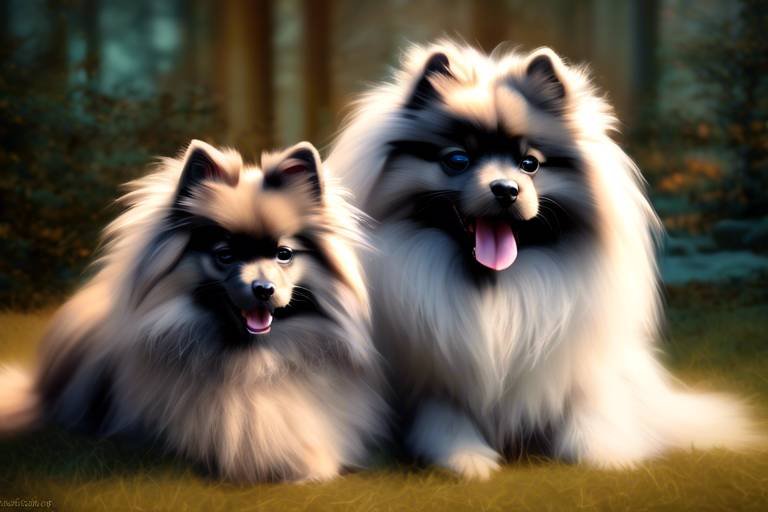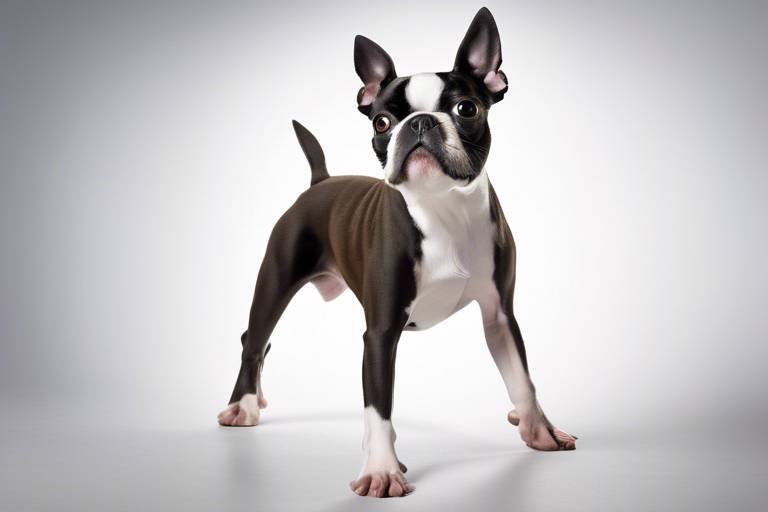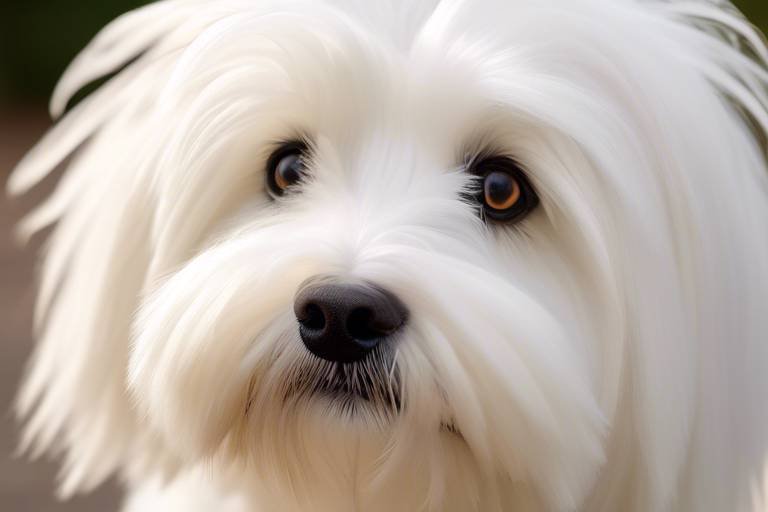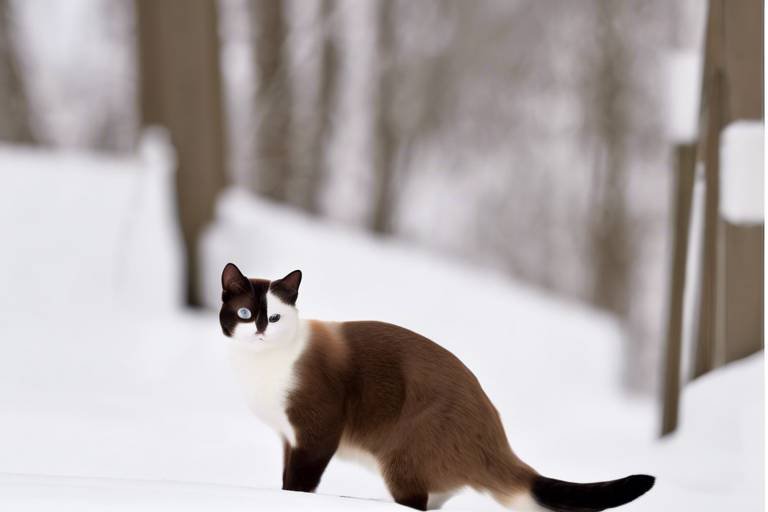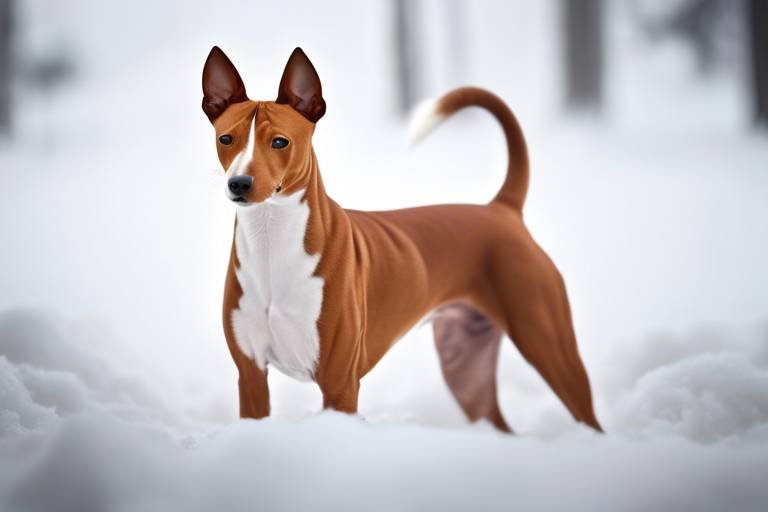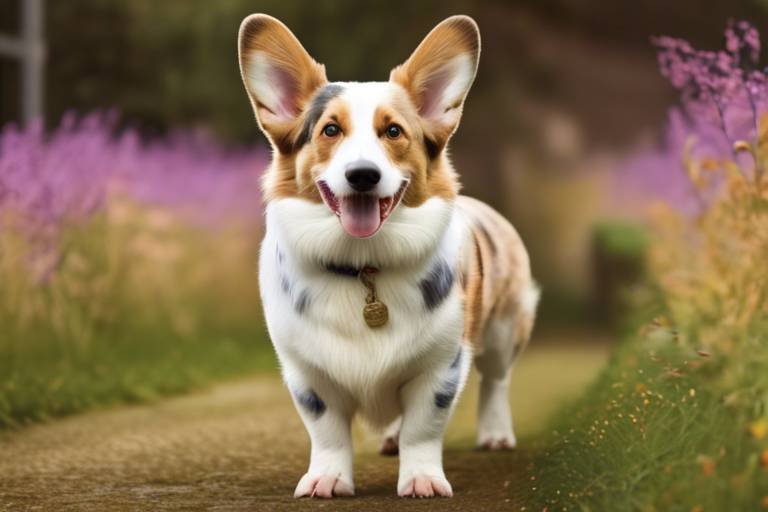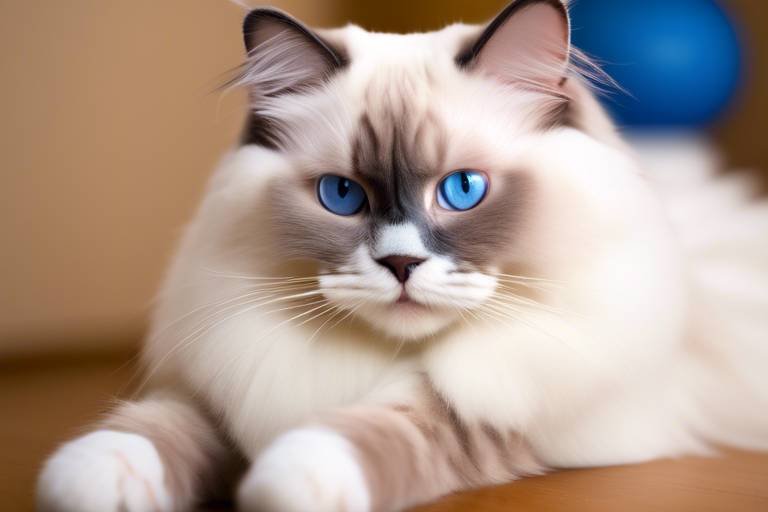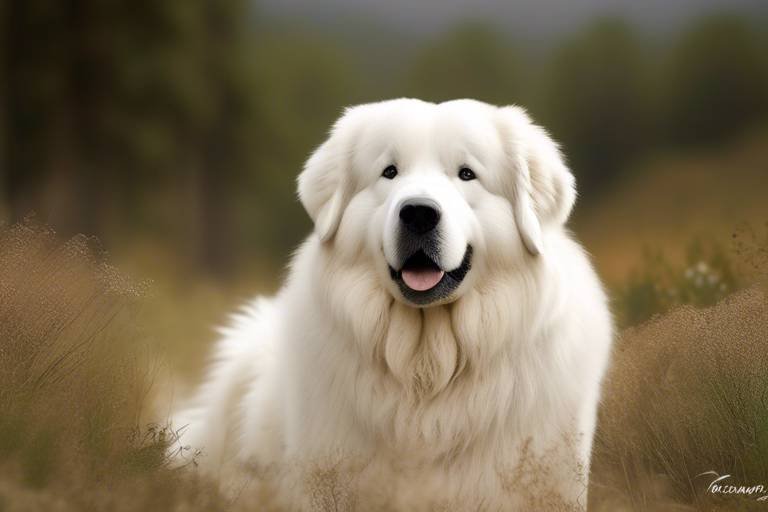Why Keeshonds Are Great Family Companions
If you're on the lookout for a furry friend that fits seamlessly into your family, look no further than the charming Keeshond. These delightful dogs are not just pets; they are family members who bring joy, laughter, and unconditional love into your home. With their fluffy coats and expressive faces, Keeshonds have a way of melting hearts at first glance. But it's not just their looks that make them special; it's their affectionate nature, adaptability, and unique characteristics that truly endear them to families of all shapes and sizes.
Imagine coming home after a long day, and as you open the door, you're greeted by a wagging tail and a happy bark. That's the magic of having a Keeshond in your life! These dogs thrive on human interaction and are known for their friendly demeanor, making them ideal companions for both children and adults. They possess a natural ability to form strong bonds with their family members, ensuring that no one ever feels alone. Whether it's snuggling on the couch during a movie night or playing fetch in the yard, Keeshonds are always ready to join in on the fun.
One of the most remarkable traits of Keeshonds is their adaptability. No matter if you live in a cozy apartment or a spacious house, these dogs can adjust to various living situations. Their moderate exercise needs mean they can thrive in different environments, ensuring they fit seamlessly into your family routine. You don't have to worry about them needing extensive outdoor space; a couple of daily walks and some playtime will keep them happy and healthy.
But what truly sets Keeshonds apart is their sociable nature. They love being part of the family and are inherently social animals. This trait shines through in their interactions with children and other pets. Keeshonds are particularly gentle and patient with kids, making them excellent playmates. Their playful spirit, combined with a protective instinct, provides a safe and enjoyable environment for children to explore and grow. Plus, they typically get along well with other pets, including cats and smaller animals, fostering a peaceful coexistence in multi-pet households.
In addition to their friendly disposition, Keeshonds are also known for their intelligence and trainability. They are eager to please their owners, which makes training a breeze. Whether it's learning basic commands or mastering fun tricks, Keeshonds are quick learners and enjoy the mental stimulation that comes with training. This intelligence not only makes them great companions but also helps strengthen the bond between dog and owner.
Now, you might be wondering about grooming. Despite their thick double coat, Keeshonds have relatively low grooming needs. Regular brushing helps manage shedding, making them a manageable choice for families who want a beautiful yet low-maintenance pet. They do experience seasonal shedding, but with consistent grooming, you can keep your home clean and your Keeshond looking fabulous.
While Keeshonds are generally healthy, it's essential to be aware of specific health considerations. Regular veterinary check-ups and a balanced diet can help ensure these dogs remain healthy and active family members. By being proactive about their health, you can enjoy many happy years with your Keeshond by your side.
- Are Keeshonds good with children? Yes, Keeshonds are gentle and patient, making them excellent companions for kids.
- Do Keeshonds require a lot of exercise? No, they have moderate exercise needs and can adapt to various living situations.
- How often do Keeshonds shed? Keeshonds experience seasonal shedding, but regular grooming can help manage it.
- Are Keeshonds easy to train? Yes, their intelligence and eagerness to please make them relatively easy to train.
- Do Keeshonds get along with other pets? Generally, Keeshonds are sociable and get along well with other pets, including cats.
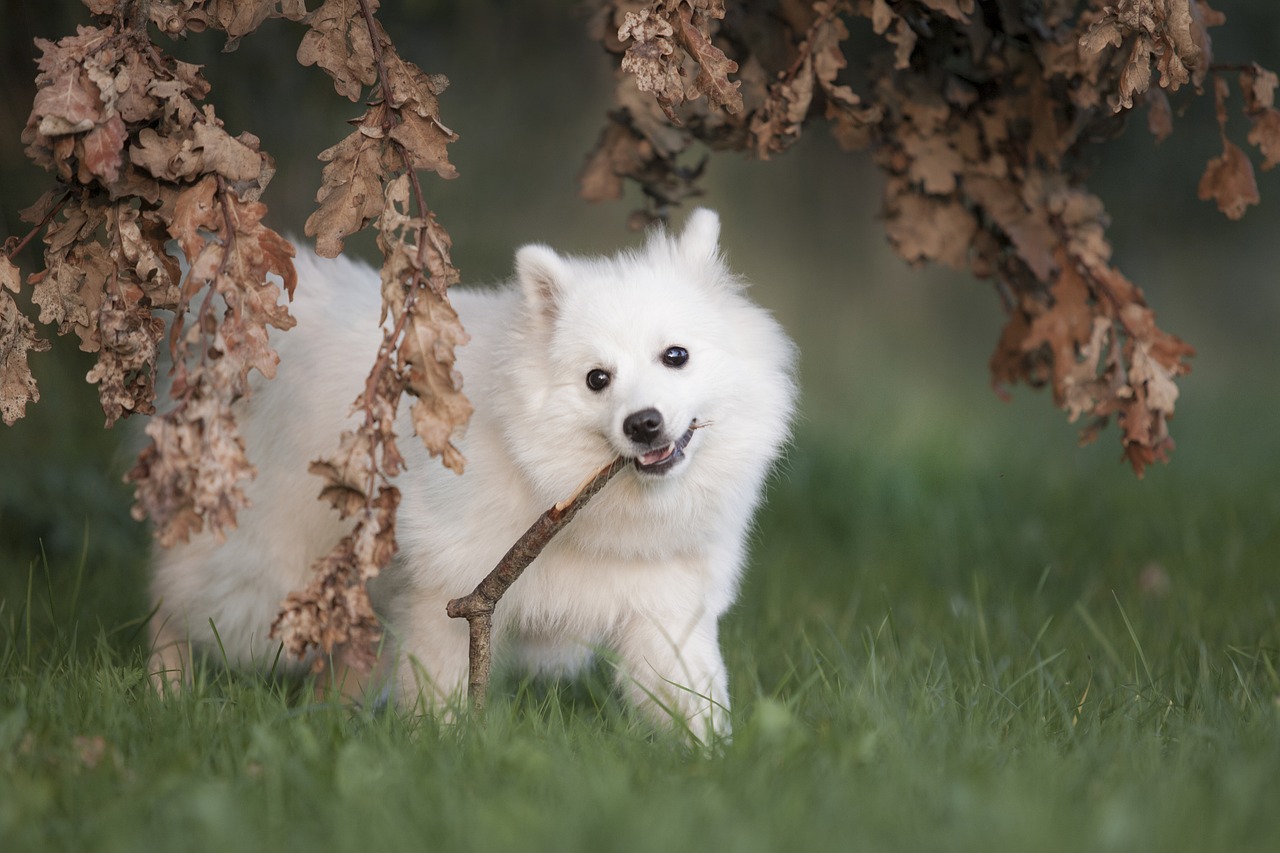
Affectionate Nature
Keeshonds are truly the embodiment of a loving companion, often described as loyal and affectionate family members. Their warm-hearted demeanor allows them to form deep connections with everyone in the household. Imagine coming home after a long day; the moment you walk through the door, your Keeshond greets you with a wagging tail and a joyful bark, as if to say, “I’ve been waiting for you!” This unwavering loyalty is one of the many reasons families adore them.
These dogs thrive on human interaction and are known for their playful and gentle nature. They possess an innate ability to sense the emotions of their owners, often providing comfort during tough times. Whether it’s snuggling on the couch during a movie night or joining in on family games in the backyard, Keeshonds are always eager to be part of the action. Their affectionate nature makes them ideal companions for both children and adults alike, fostering a sense of unity and joy within the family.
Furthermore, Keeshonds are excellent at showing their affection in various ways. Here are some common behaviors that highlight their loving nature:
- Gentle Nuzzles: They often nuzzle against their owners, a sign of love and trust.
- Playful Barks: Their playful barks can be a way to engage family members in fun activities.
- Warm Cuddles: They enjoy curling up next to their humans, providing warmth and comfort.
In addition to their affectionate behavior, Keeshonds are known for their expressive faces. With their distinctive “spectacles” around their eyes, they seem to communicate their feelings effectively. This unique feature not only adds to their charm but also enhances their ability to connect with family members on a deeper level. Their expressive nature makes it hard to resist their charm, often leading to spontaneous play sessions or cuddle times.
Ultimately, the affectionate nature of Keeshonds can transform a house into a home. Their love and loyalty create an atmosphere filled with warmth and happiness, making them a perfect fit for families looking for a furry friend. So, if you’re considering adding a Keeshond to your family, be prepared for a lifetime of love, laughter, and unforgettable memories!

Adaptability to Family Life
Keeshonds are incredibly versatile dogs, making them ideal companions for families, regardless of their living situation. Whether you live in a cozy apartment in the city or a spacious house in the suburbs, Keeshonds can adapt to their surroundings with ease. Their moderate exercise needs mean they don’t require vast amounts of space to roam, which is perfect for families with different lifestyles. Imagine coming home from a long day and being greeted by a happy Keeshond, wagging its fluffy tail, ready to snuggle up on the couch with you. It’s this kind of adaptability that makes them a popular choice among families.
One of the key factors contributing to their adaptability is their gentle and easy-going nature. Keeshonds are not overly demanding when it comes to exercise; a couple of walks a day and some playtime in the yard or living room will keep them happy. This makes them suitable for families who might not have the time or energy for extensive outdoor adventures. Plus, their sociable demeanor means they thrive on interaction, so even a quick game of fetch or a few rounds of tug-of-war can satisfy their playful spirit.
Moreover, Keeshonds are generally well-mannered and can adjust their energy levels based on the family’s activity. They are just as happy to join in on a family hike as they are to lounge around during a movie night. This flexibility allows them to fit seamlessly into family routines, whether your household is bustling with activity or embracing quiet evenings at home. It’s like having a furry friend who can match your vibe, making every moment enjoyable.
In addition to their personality traits, Keeshonds are also known for their quick adaptability to training and new environments. They are intelligent dogs that pick up on cues and commands swiftly, making it easier for families to integrate them into their daily lives. For instance, if you’re moving to a new home, Keeshonds usually adjust well to new surroundings, often exploring their new territory with curiosity and excitement. Their ability to learn and adapt is not just a trait; it’s a hallmark of their breed.
To sum it up, the adaptability of Keeshonds to family life is a combination of their loving nature, moderate exercise needs, and quick learning abilities. They can fit into various lifestyles and living situations, making them a perfect addition to any family. Whether you’re a busy household or a calm one, a Keeshond can bring joy and companionship, making every day a little brighter.
Socialization Skills
Keeshonds are inherently social animals, and their are one of the many reasons they make fantastic family companions. From the moment they enter your home, these dogs thrive on interaction with their human family members. Their friendly and outgoing nature allows them to easily blend into a variety of social settings, making them the life of the party, whether it's a family gathering or a casual get-together with friends. Imagine having a furry friend who not only welcomes guests with wagging tails but also brings joy and laughter to every room they enter!
One of the most remarkable aspects of Keeshonds is their ability to create positive interactions with both humans and other pets. Their playful demeanor encourages children to engage in fun activities, while their gentle temperament makes them suitable for households with senior family members. Keeshonds are known to be great listeners, often sitting patiently as kids share their stories or secrets, fostering an emotional bond that lasts a lifetime.
Moreover, Keeshonds possess an innate ability to read social cues, which enhances their interactions. They can sense when someone is feeling down or anxious, and their comforting presence often provides solace. This emotional intelligence is what makes Keeshonds not just pets, but true family members who contribute to a harmonious household atmosphere.
When it comes to meeting new friends, Keeshonds are usually unphased. They approach other dogs and pets with a friendly attitude, which helps them establish friendships within the neighborhood. Their sociable nature is particularly beneficial for families with multiple pets, as Keeshonds typically get along well with cats and smaller animals. Here’s a quick overview of their socialization skills:
| Socialization Aspect | Description |
|---|---|
| Interaction with Children | Gentle and patient, Keeshonds enjoy playing and bonding with kids. |
| Compatibility with Other Pets | They generally coexist peacefully with cats and other small animals. |
| Ability to Read Social Cues | Keeshonds can sense emotions, providing comfort when needed. |
| Welcoming Guests | They greet visitors with enthusiasm, making everyone feel at home. |
In summary, Keeshonds are not just excellent family pets; they are social butterflies who enrich the lives of everyone around them. Their ability to connect with people of all ages and their friendly demeanor make them a perfect addition to any family. So, if you’re looking for a furry friend who can seamlessly fit into your family dynamic and bring joy to your home, a Keeshond might just be the perfect companion!
- Are Keeshonds good with children? Yes, Keeshonds are known for their gentle and playful nature, making them excellent companions for children.
- Do Keeshonds get along with other pets? Generally, Keeshonds are very sociable and tend to get along well with other pets, including cats and smaller animals.
- How much exercise do Keeshonds need? Keeshonds have moderate exercise needs and enjoy regular walks and playtime, making them suitable for various lifestyles.
- Are Keeshonds easy to train? Yes, Keeshonds are intelligent and eager to please, which makes them relatively easy to train.
Interactions with Children
Keeshonds are not just pets; they are family members who offer a unique blend of affection and playfulness that makes them exceptional companions for children. Imagine a fluffy cloud of joy bounding around your living room, wagging its tail and ready to engage in endless games of chase or fetch. These dogs have a natural instinct to be gentle and patient, which is crucial when interacting with young ones. They seem to understand that children can be a bit clumsy and unpredictable, and they respond with a level of tolerance that is truly heartwarming.
One of the most delightful aspects of Keeshonds is their playful spirit. They thrive on interaction and love to be included in family activities. Whether it’s a game of tug-of-war with a child’s favorite toy or a cozy cuddle session during movie night, Keeshonds are always eager to join in. Their friendly demeanor not only makes them great playmates but also provides children with a sense of responsibility and companionship. Caring for a Keeshond can teach kids important values like empathy and nurturing, fostering a bond that lasts a lifetime.
Moreover, Keeshonds have a protective instinct that adds an extra layer of security when children are around. They are naturally alert and will bark to alert the family of any unusual happenings, which can give parents peace of mind. This protective nature, combined with their gentle temperament, creates a safe environment for children to explore and play. In fact, many families find that their Keeshond becomes a child's closest confidant, sharing secrets and adventures that only they understand.
To ensure the best interactions between Keeshonds and children, it’s essential to supervise their playtime, especially with younger kids. Teaching children how to respectfully interact with their furry friend—like gentle petting and sharing toys—can enhance their relationship. Here are some tips for fostering positive interactions:
- Supervision: Always keep an eye on playtime to prevent any accidental roughhousing.
- Gentle Handling: Teach kids to approach the dog calmly and avoid sudden movements that might startle them.
- Positive Reinforcement: Encourage children to reward the dog with treats or praise for good behavior.
In conclusion, Keeshonds and children make a fantastic pair. Their innate ability to bond, combined with their playful and protective nature, ensures that both kids and dogs thrive in a loving family environment. Whether it’s playing in the yard or snuggling on the couch, these dogs truly know how to bring joy and laughter into a home.
1. Are Keeshonds good with toddlers?
Yes, Keeshonds are known for their gentle nature, making them great companions for toddlers. However, supervision is key to ensure safe interactions.
2. How do Keeshonds react to loud noises from children?
Keeshonds are generally adaptable and can handle the noise that comes with children playing. They may bark to alert you, but they usually adjust well to a lively environment.
3. Can Keeshonds help teach children responsibility?
Absolutely! Caring for a Keeshond can teach children about empathy, responsibility, and the importance of nurturing another living being.
4. What is the best way to introduce a Keeshond to my child?
Introduce them slowly and in a controlled environment. Allow the dog to approach your child at their own pace, and encourage gentle interactions.
Compatibility with Other Pets
Keeshonds are renowned for their friendly and sociable nature, which makes them highly compatible with other pets in the household. If you already have a furry friend or two, you’ll be pleased to know that Keeshonds generally get along well with a variety of animals. Their gentle demeanor and playful spirit make them excellent companions for both dogs and cats alike. Imagine a Keeshond bounding around the yard, happily playing with a cat or sharing a cozy spot on the couch with a smaller dog. This harmonious coexistence is not just a dream; it’s a reality for many Keeshond owners.
When introducing a Keeshond to other pets, it’s crucial to consider their socialization skills. Since Keeshonds thrive in family environments, they are often eager to make new friends. However, proper introductions and gradual acclimatization are key to ensuring that everyone gets along. Here are a few tips for a smooth introduction:
- Supervised Meetings: Always supervise initial interactions to monitor behavior and ensure safety.
- Positive Reinforcement: Use treats and praise to reward friendly behavior during the introduction.
- Separate Spaces: Provide each pet with their own space to retreat to if they feel overwhelmed.
In multi-pet households, Keeshonds often take on the role of the peacekeeper. Their playful antics can lighten the mood and encourage other pets to join in the fun. This can be especially beneficial for families with children, as Keeshonds are known to be patient and gentle with younger members of the household. Whether it’s a game of chase in the backyard or a quiet moment spent lounging together, Keeshonds create an atmosphere of companionship and joy that resonates throughout the home.
It's also worth noting that Keeshonds have a natural curiosity and love to explore their surroundings. This means they may occasionally engage in playful antics with other pets, which can lead to amusing interactions. While they may have a tendency to herd smaller animals, their instinct is generally to play rather than to dominate. With the right training and socialization, Keeshonds can live harmoniously with a variety of pets, making them an excellent choice for families looking to expand their furry family.
Here are some common questions about Keeshonds and their compatibility with other pets:
- Are Keeshonds good with cats? Yes, Keeshonds can be very good with cats, especially if they are introduced properly and raised together.
- How do Keeshonds behave with small animals? Keeshonds generally have a gentle disposition, but supervision is essential when they are around smaller animals.
- What should I do if my Keeshond is not getting along with my other pets? Gradual introductions and positive reinforcement can help. If issues persist, consider consulting a professional trainer.
Intelligence and Trainability
Keeshonds are not just adorable fluffballs; they are also incredibly intelligent dogs that shine when it comes to trainability. Their sharp minds and eagerness to please their owners make them a joy to train. Imagine having a companion that not only understands your commands but also seems to anticipate your needs! This unique combination of traits means that Keeshonds can learn a variety of commands and tricks with relative ease. They thrive on mental stimulation, so engaging them in training sessions can be a delightful experience for both the dog and the owner.
One of the keys to effective training with Keeshonds is their positive reinforcement nature. They respond exceptionally well to rewards, whether it's treats, praise, or playtime. This method not only strengthens their bond with their human family members but also encourages them to perform desired behaviors. Think of it as a dance where both partners are in sync, creating a harmonious routine that benefits everyone involved.
When it comes to training, consistency is crucial. Keeshonds thrive on routine and clear expectations. Establishing a regular training schedule helps them understand what is expected of them. For example, teaching basic commands such as "sit," "stay," and "come" can be a great starting point. As they master these commands, you can introduce more advanced tricks, keeping their minds engaged and their spirits high.
In addition to basic commands, Keeshonds excel in various canine sports and activities. Their agility and quick learning make them suitable candidates for obedience training, agility courses, and even tricks competitions. Imagine your Keeshond weaving through cones or jumping through hoops, showcasing their intelligence and athleticism! This not only provides them with physical exercise but also mental challenges that keep them sharp and happy.
However, like any breed, Keeshonds can have their quirks. They may exhibit some stubbornness at times, which can be a challenge for new owners. It's essential to approach training with patience and understanding. If you encounter resistance, remember that a little creativity can go a long way. Mixing up training techniques or incorporating games can reignite their enthusiasm and keep training sessions fun.
In summary, Keeshonds are intelligent and trainable dogs that thrive on positive reinforcement and consistent training. Their playful spirit and eagerness to please make them ideal companions for families looking to engage in training activities. So, if you're considering adding a Keeshond to your family, get ready for an exciting journey filled with learning and bonding!
- Are Keeshonds good for first-time dog owners? Yes, their friendly nature and trainability make them suitable for first-time owners.
- How much exercise do Keeshonds need? Keeshonds require moderate exercise, such as daily walks and playtime, to stay healthy and happy.
- Do Keeshonds shed a lot? They do shed, especially during seasonal changes, but regular grooming can help manage this.
- Are Keeshonds good with children? Absolutely! Keeshonds are gentle and patient, making them great companions for kids.
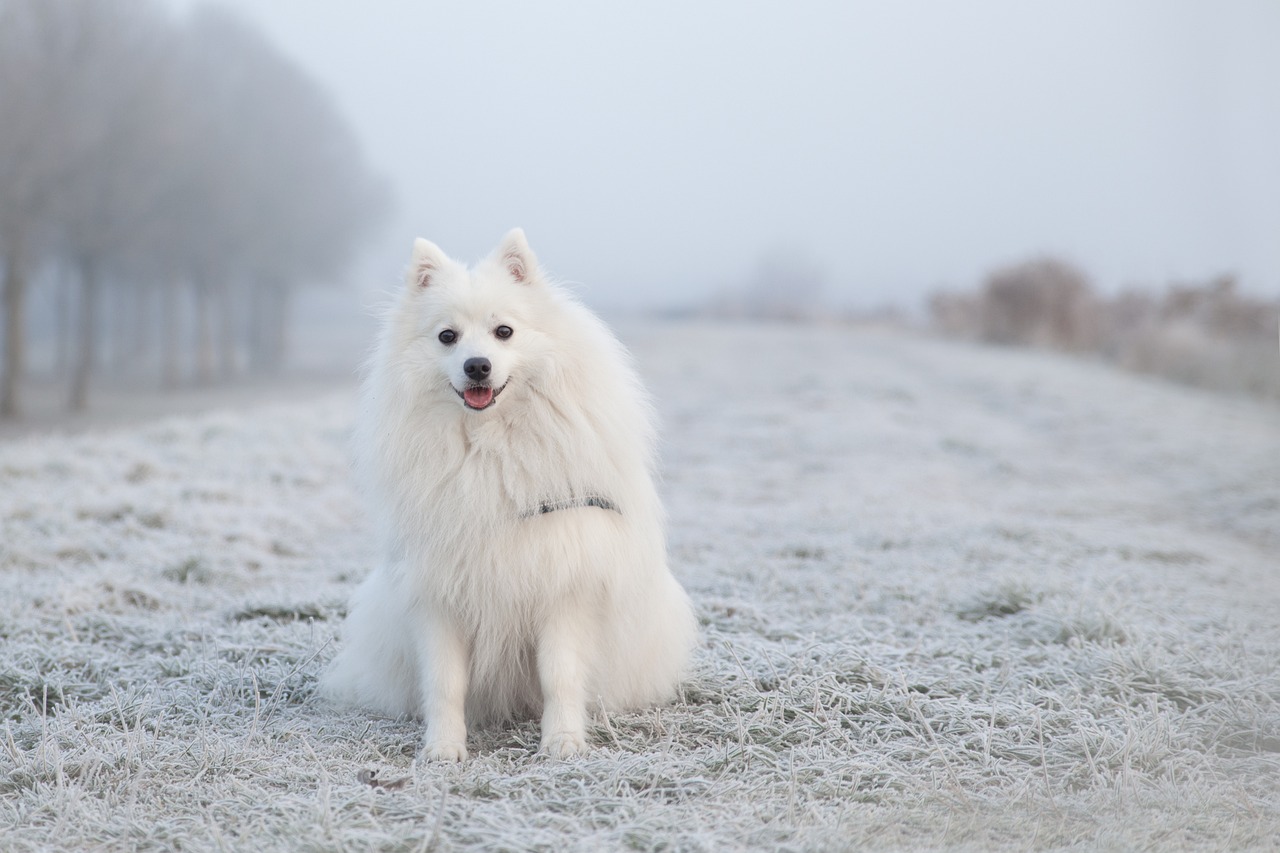
Low Maintenance Grooming
Keeshonds are not just adorable; they also come with a routine that makes them an appealing choice for families. With their thick double coat, you might think they require extensive grooming, but that’s not the case! In fact, their grooming needs are quite manageable, making them perfect companions for busy households. Regular brushing, ideally once or twice a week, is usually sufficient to keep their coat looking its best and to control shedding. This routine not only keeps their fur healthy but also strengthens the bond between you and your furry friend.
One of the key aspects of Keeshond grooming is understanding their seasonal shedding. These dogs typically shed more heavily during the spring and fall, which is completely normal. During these times, you might want to increase your brushing frequency to help manage the extra fur floating around your home. A simple grooming session can turn into a fun bonding experience, where you can check for any skin issues or parasites while enjoying some quality time together. And let's be honest, who doesn't love a good cuddle session with a fluffy dog?
It's also important to keep in mind that Keeshonds have a natural tendency to develop mats and tangles, especially around their ears and underbelly. To prevent this, a quick brush through these areas during your regular grooming sessions can save you from dealing with more serious knots later on. If your Keeshond starts to look a bit scruffy, don’t hesitate to give them a bath. Use a gentle dog shampoo to keep their coat clean and vibrant, ensuring you rinse thoroughly to avoid any skin irritation.
In terms of grooming tools, a slicker brush and a metal comb are your best friends. The slicker brush helps remove loose hair and dirt, while the comb is great for detangling. If you're unsure about the grooming process, many pet owners find that watching a few online tutorials can provide helpful tips and tricks. Remember, grooming should be a positive experience for both you and your dog, so make it fun! Treats and praise can go a long way in ensuring your Keeshond looks forward to grooming time.
Ultimately, the low maintenance grooming of Keeshonds makes them an ideal choice for families who want a loving pet without the hassle of extensive upkeep. With a little bit of regular care, you can keep your Keeshond looking fabulous and feeling great, allowing you to focus on what really matters: enjoying life together!
- How often should I groom my Keeshond? - Ideally, you should brush your Keeshond once or twice a week, increasing frequency during shedding seasons.
- Do Keeshonds require professional grooming? - Generally, no. With regular brushing and occasional baths, you can manage their grooming needs at home.
- What tools do I need for grooming? - A slicker brush and a metal comb are the most effective tools for grooming a Keeshond.
- How can I manage shedding? - Regular brushing can significantly reduce shedding, especially during peak shedding seasons.
Seasonal Shedding
Keeshonds are known for their stunning, fluffy double coats, which contribute to their charming appearance. However, with beauty comes a bit of responsibility, especially when it comes to . As the seasons change, Keeshonds undergo a natural shedding process that can surprise unsuspecting owners. Typically, they shed more during the spring and fall, as they prepare for warmer and cooler temperatures. This shedding phase can be likened to a wardrobe change, where they exchange their winter coat for a lighter summer one and vice versa.
To effectively manage shedding, regular grooming is essential. A consistent brushing routine not only keeps your Keeshond looking their best but also helps to minimize the amount of fur floating around your home. Here are some tips to keep in mind:
- Brush Regularly: Aim to brush your Keeshond at least twice a week during normal periods, and daily during peak shedding seasons. This helps remove loose hair and prevents matting.
- Use the Right Tools: Invest in a good-quality slicker brush and an undercoat rake to effectively tackle their thick fur.
- Bathing: While not required too frequently, a bath during shedding season can help loosen and remove dead hair. Just be sure to use a gentle dog shampoo.
Understanding the shedding cycle of your Keeshond can make a significant difference in maintaining a clean and comfortable home environment. By anticipating when shedding will occur, you can prepare yourself with the right grooming tools and techniques. Remember, a little extra effort during these times will lead to a happier, healthier dog and a cleaner living space for your family.
Additionally, it's important to note that while shedding is a natural process, excessive shedding could indicate an underlying health issue. If you notice a sudden increase in shedding or any skin irritations, it's wise to consult your veterinarian. Keeping an eye on your Keeshond's health ensures they remain a vibrant part of your family for years to come.
Q: How often should I groom my Keeshond during shedding season?
A: During shedding season, it's best to brush your Keeshond daily to manage loose fur effectively.
Q: Is it normal for Keeshonds to shed a lot?
A: Yes, Keeshonds do shed, especially during seasonal changes. Regular grooming can help control the amount of fur in your home.
Q: What tools are best for grooming a Keeshond?
A: A slicker brush and an undercoat rake are highly recommended for managing their thick double coat.
Q: Can excessive shedding be a sign of health issues?
A: Yes, while shedding is normal, sudden or excessive shedding can indicate health problems. Consult your veterinarian if you have concerns.
Health Considerations
This article explores the many reasons Keeshonds make excellent family pets, including their affectionate nature, adaptability, and unique characteristics that endear them to families of all shapes and sizes.
Keeshonds are known for their loving and affectionate demeanor, often forming strong bonds with family members. Their friendly disposition makes them ideal companions for children and adults alike.
These dogs easily adapt to various living situations, whether in a house or an apartment. Their moderate exercise needs make them suitable for different lifestyles, ensuring they fit seamlessly into family routines.
Keeshonds are inherently social animals, thriving in family environments. Their friendly nature encourages positive interactions with both humans and other pets, promoting a harmonious household atmosphere.
Keeshonds are particularly gentle and patient with children, making them excellent playmates. Their playful spirit and protective instincts ensure a safe and enjoyable environment for kids.
These dogs generally get along well with other pets, including cats and smaller animals. Their sociable nature helps foster a peaceful coexistence within multi-pet households.
Keeshonds are intelligent dogs, making them relatively easy to train. Their eagerness to please their owners enhances their ability to learn commands and tricks quickly.
Despite their thick double coat, Keeshonds have low grooming needs. Regular brushing helps manage shedding, making them a manageable choice for families who want a beautiful yet low-maintenance pet.
Keeshonds experience seasonal shedding, which can be managed with consistent grooming. Understanding this aspect helps families prepare and maintain a clean living environment throughout the year.
While Keeshonds are generally healthy, like all breeds, they can be prone to specific health issues. Regular veterinary check-ups are essential to catch any potential problems early. Some common health concerns to watch for include:
- Hip Dysplasia: A genetic condition that can lead to arthritis.
- Patellar Luxation: A dislocated kneecap that can cause discomfort.
- Thyroid Issues: Hypothyroidism can affect their energy levels and weight.
To ensure that your Keeshond remains a healthy and active family member, it is crucial to provide a balanced diet tailored to their age, weight, and activity level. Regular exercise and mental stimulation are also vital, as Keeshonds thrive on interaction and play. Keeping their weight in check can prevent obesity-related issues, which are common in many breeds. Regular grooming not only keeps their coat looking great but also allows you to check for any skin issues or parasites that might arise.
1. How often should I take my Keeshond to the vet?
It's advisable to schedule annual wellness check-ups, but if you notice any unusual behavior or symptoms, don't hesitate to consult your vet sooner.
2. Are Keeshonds good with children?
Absolutely! Keeshonds are known for their gentle nature and make excellent companions for kids, often becoming their best friends.
3. How much exercise do Keeshonds need?
Keeshonds require moderate exercise, about 30 minutes a day, which can include walks, playtime, and mental activities to keep them engaged.
4. Do Keeshonds shed a lot?
They do shed, especially during seasonal changes, but regular brushing can help manage this and keep your home clean.
5. What is the lifespan of a Keeshond?
On average, Keeshonds live between 12 to 15 years, but with proper care, some can live even longer.
Frequently Asked Questions
- What makes Keeshonds great family pets?
Keeshonds are known for their affectionate nature and friendly disposition, which makes them excellent companions for both children and adults. Their ability to form strong bonds with family members creates a loving atmosphere in the home.
- Are Keeshonds good with children?
Absolutely! Keeshonds are particularly gentle and patient with kids. Their playful spirit, combined with protective instincts, ensures that children have a safe and enjoyable playmate.
- Can Keeshonds adapt to apartment living?
Yes, Keeshonds are quite adaptable and can thrive in various living situations, including apartments. Their moderate exercise needs mean they can fit seamlessly into different family routines, making them suitable for both large homes and smaller spaces.
- How much grooming do Keeshonds require?
Despite their thick double coat, Keeshonds have relatively low grooming needs. Regular brushing helps manage shedding, making them a manageable choice for families who want a beautiful yet low-maintenance pet.
- Do Keeshonds get along with other pets?
Yes! Keeshonds generally have a sociable nature that allows them to coexist peacefully with other pets, including cats and smaller animals. This makes them a great addition to multi-pet households.
- Are Keeshonds easy to train?
Definitely! Keeshonds are intelligent dogs, and their eagerness to please their owners makes them relatively easy to train. They quickly learn commands and tricks, which can be a fun bonding experience for the whole family.
- What health issues should I be aware of with Keeshonds?
While Keeshonds are generally healthy, they can be prone to specific health issues. Regular veterinary check-ups and a balanced diet can help ensure that they remain healthy and active family members.
- How do I manage seasonal shedding in Keeshonds?
Keeshonds experience seasonal shedding, but this can be managed with consistent grooming. Regular brushing during shedding seasons helps maintain a clean living environment and keeps their coat looking great.

